Tough Water Decisions in 2018 Election Initiatives
Voters will decide on infrastructure spending, oil and gas development, and salmon habitat protection.
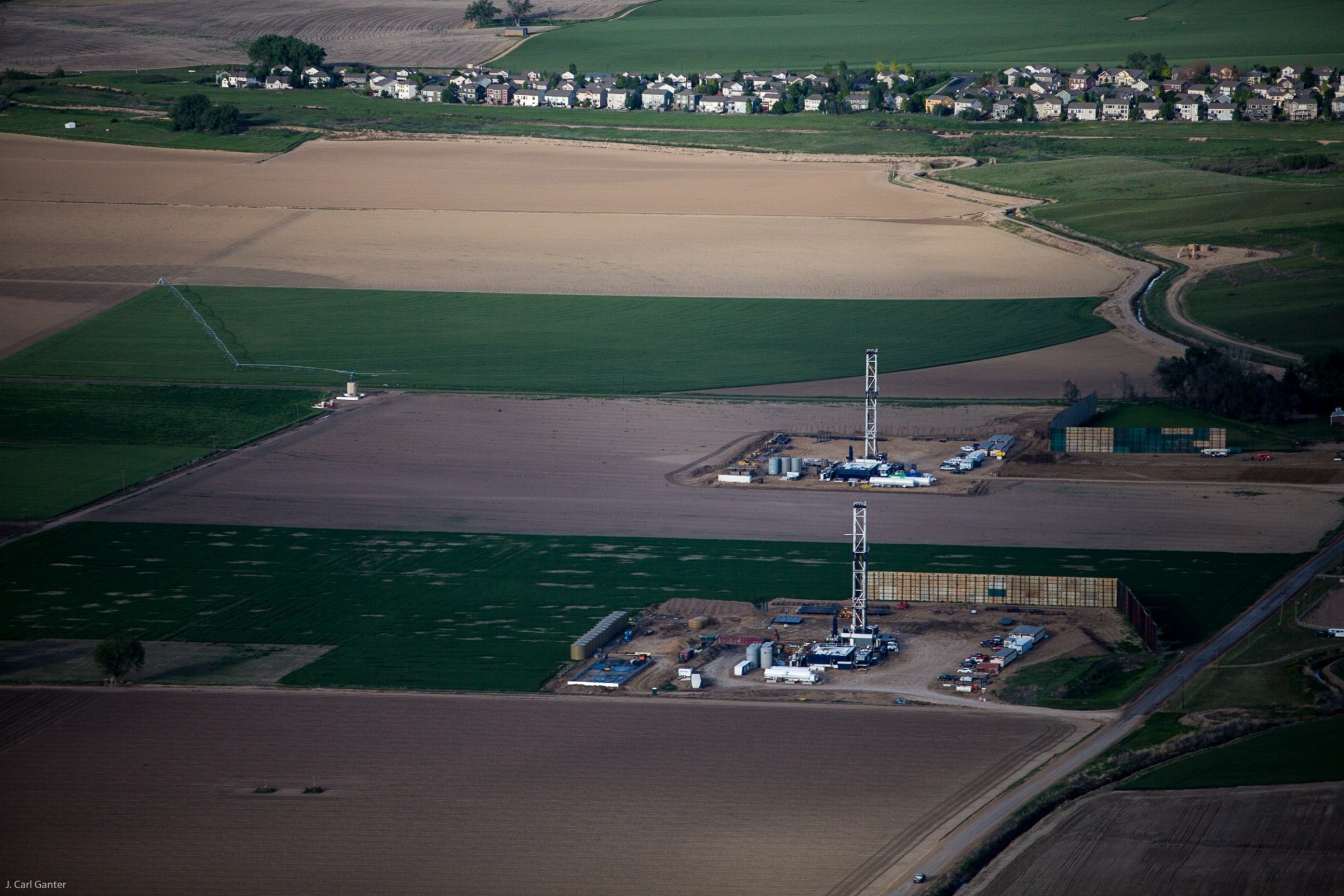
Voters in Colorado will decide whether to require new oil and gas developments to be located farther from buildings, homes, and water sources. Photo © J. Carl Ganter/Circle of Blue
By Brett Walton, Circle of Blue
In California, it’s an $8.3 billion bond measure. In Colorado, it’s oil and gas regulation. And in Alaska, it’s how much deference to give salmon habitat when permitting mines, roads, and other infrastructure.
This election season, voters in at least a half dozen states and counties will determine the fate of ballot measures that propose policy changes or billions of dollars in new spending that will affect the quality and availability of water supplies.
State Initiatives
Measure 1, Alaska
Measure 1 changes state law to give greater protection to anadromous fish and wildlife habitat, authorizing the Alaska Department of Fish and Game to oversee an expanded permitting program for new developments, infrastructure maintenance, and renewal of existing permits.
Anadromous fish are those that spend part of their lives at sea. In Alaska that means five species of salmon and lamprey, among others. And fish are big business in Alaska. In 2017, the commercial fishing industry caught 114 million salmon, according to preliminary state figures.
The permits proposed by Measure 1 require that a development not alter water quality, water temperature, or water flows in a way that would harm salmon and other fish. The Department of Fish and Game, which believes that current regulations are sufficient, has said that the measure would increase its authority “by orders of magnitude.” That is due, in part, to the assumption in the measure that all streams and waterbodies that are connected to a waterway that supports anadromous fish are covered by the permitting law.
“It defines anadromous fish habitat very, very broadly to include all lands and water that could affect anadromous fish, even indirectly,” said Joanne Grace, director of the civil division of the Alaska Department of Law, at a state Senate committee hearing in July.
If the measure passes, the Department of Fish and Game says that staff will need to write regulations to define “significant adverse effects” to salmon habitat.
The measure does not allow for damage at the construction site to be offset by restoring habitat at another location. The permitting procedures are coupled with a public notice and comment period for major developments.
Supporters, including conservation groups, tribes, recreation outfitters, and commercial fishing businesses, struggled to bring this question to the ballot. It was initially rejected by the lieutenant governor, with advice from the Department of Law, because he determined that it would have taken authority away from the Legislature to control the use of state assets, in this case waterways. The Alaska Supreme Court allowed the measure to be included on the ballot after removing two provisions that were deemed unconstitutional.
Claiming that the measure is too broad, the coalition that opposes the measure includes builders, mining companies, contractors, most of the Alaska Native corporations, and other business groups. Those groups argue that the measure would tie up major construction in the state.
The Department of Fish and Game says that the measure would not halt all development, but it will lengthen the permitting process and could result in projects being rejected.
Proposition 3, California
Californians frequently vote on state funding measures for water projects and the environment. Just four years after approving a $7.5 billion water bond and five months after a $4.1 billion outlay for parks, wildlife, and water, voters will weigh in on an even larger expenditure.
Proposition 3 is an $8.9 billion bond, designated not only for engineered water infrastructure but for watershed restoration. It is a general obligation bond, meaning it will be repaid by taxpayers, and it was placed on the ballot via a signature-gathering campaign led by Jerry Meral, former deputy secretary of the California Natural Resources Agency.
The bond will fund six categories of project: watersheds, water supply, wildlife habitat, water infrastructure upgrades, groundwater, and flood protection. Within those categories are specific earmarks: $200 million for the Salton Sea, for instance, $400 million for wastewater recycling, and $750 million to fix the Madera and Friant-Kern canals, which deliver water to Central Valley farms. Portions of the Friant-Kern are operating at 40 percent of the designed capacity because the land beneath the canal is sinking, a problem caused by farmers pumping groundwater during droughts.
The Legislative Analyst’s Office forecasts that bond repayment will be $430 million per year over 40 years, essentially doubling the nominal cost to $17.3 billion when interest is taken into account.
Response to the bond has been cold. The League of Women Voters, Sierra Club, and the editorial boards of the state’s largest newspapers including the Los Angeles Times, San Francisco Chronicle, and Sacramento Bee recommended rejecting the proposal. The beneficiaries of many of the projects should be the ones to pay, they argue. Not the taxpayers.
Proposition 112, Colorado
Voters will decide whether to push new oil and gas infrastructure farther from homes, schools, businesses, and water sources.
Proposition 112 will require oil and gas drilling, production, processing, and waste treatment facilities not on federally managed public land to be at least 2,500 feet (roughly a half mile) from an “occupied structure” or a “vulnerable area.” Current law is 500 feet.
Occupied structures are defined as buildings in which people live and work, such as homes, schools, and hospitals. Vulnerable areas are places like sports fields, playgrounds, drinking water sources, irrigation canals, or lakes. The initiative allows state and local governments to designate additional vulnerable areas and to increase setback distances.
The setback distance extends outward in all directions from a protected structure. Under current law, the circle in which oil and gas development is excluded is roughly 18 acres. If the setback reaches 2,500 feet, the prohibition zone grows to 450 acres.
The oil and gas industry, unsurprisingly, opposes the measure, as do local chambers of commerce. Both major-party candidates for governor, Democrat Jared Polis and Republican Walker Stapleton, oppose it as well.
Nonetheless, a recent University of Colorado poll shows public opinion on Prop 112 essentially a dead heat.
Question 2, Maine
Voters will decide whether to issue $30 million in bonds for preventing pollution in coastal waters. More than 90 percent of the funds are directed toward planning and building wastewater treatment facilities. Areas with shellfish habitat that suffers from poor water quality are the highest priority for funding.
The measure also earmarks $2 million for grants to towns to replace broken septic systems that are polluting coastal waters or causing a public nuisance.
With interest payments, the total cost of the measure will be $38 million over 10 years.
Initiative 186, Montana
Montanans will also consider a citizen’s initiative aimed at stricter regulation of an extractive industry.
Initiative 186 requires new hardrock mines to offer a cleanup plan after the site closes that prevents water pollution and ensures that “perpetual treatment” of mine drainage water is not necessary. Existing mines, even when seeking renewal of permits, would not be affected.
Like in Alaska, language in the initiative would need to be defined, either by the Legislature or the Department of Environmental Quality. Those terms, according to the attorney general and secretary of state, include: perpetual treatment, perpetual leaching, and contaminants. Opponents tout that ambiguity as a reason to reject the measure.
David Brooks, executive director of Montana Trout Unlimited, which is leading the “yes” campaign, told Circle of Blue that the refinement of definitions is not a problem. “Other statutes have gone through that process,” he said.
Conservation organizations and fly-fishing outfitters support the initiative, as do nearly five dozen religious leaders and the mayors of some of the state’s largest cities: Bozeman, Great Falls, Helena, Missoula, and Whitefish. They object to state-funded cleanups after mine operators go out of business.
One potential mine has drawn significant attention in recent years. American Rivers, an advocacy group, named the Smith River one of America’s most endangered in 2018 because of the Black Butte copper mine that is proposed for the river’s headwaters.
Brooks said that mining without polluting water is possible with proper hydrological modeling and preparation. Some mines are already doing that, he said.
“The only thing this changes is that it tasks the Department of Environmental Quality with saying ‘no’ in cases where mines would need water treatment perpetually,” Brooks said.
Mining companies are leading the opposition, framing the proposal as a threat to jobs.
Question 3, Rhode Island
The state General Assembly proposes a $47.3 million bond for water and environmental cleanup.
The total includes $7.9 million for sewage and drinking water infrastructure. Those funds are needed to release roughly $40 million in federal funds that require a state contribution.
The bond also supports $7 million to dredge the Providence River and two other waterways in the capital, $5 million to protect wastewater treatment plants from flooding, and $4 million for dam repairs.
It has the support of Mayor Jorge Elorza and Gov. Gina Raimondo.
Initiative 1631, Washington
After failing to persuade voters to pass a revenue-neutral carbon tax in 2016, proponents in Washington state are using fiscal policy to reduce greenhouse gas emissions by taking a different tack in this election.
Initiative 1631 still levies a fee on large polluters. But instead of returning the money to residents, as the earlier version would have done, revenue — an estimated $2.3 billion over the first five years — will be invested in energy and environmental projects.
If Washington is to become the first state in the nation with a carbon tax, more voters must be convinced of its benefits. Voters rejected the 2016 carbon tax by a margin of 59 to 41.
The coalition supporting the initiative hopes the investment plan will do that. Seventy percent of the revenue is earmarked for clean energy and air, and a quarter goes to clean water and forest restoration.
Within those broad categories the funds are further divided. At least 15 percent of the clean energy and air investments must reduce energy use or energy costs for low-income households (those below 200 percent of the federal poverty line or 80 percent of the local median income).
Authorized clean water investments include: shoreline and floodplain restoration, groundwater mapping, stormwater infrastructure, and fisheries habitat.
The initiative also directs money to certain groups. Projects supported by Indian tribes will get at least 10 percent of the funds. Money is set aside to provide a softer landing for workers in fossil fuel jobs during the clean energy transition.
Spending will be overseen by a 15-member board. State agencies will develop spending plans that the board will approve. The board includes agency heads and five people appointed by the governor.
The fee goes into effect on January 1, 2020, with a charge of $15 per metric ton of carbon. It increases annually by $2 per ton, plus inflation. The annual increases, except for inflation adjustments, end when the state meets a carbon reduction goal that was set a decade ago — decreasing emissions by 25 percent compared to 1990 levels by 2035 — and is on track to meet a 2050 half of a 50 percent reduction.
In 2013, the most recent data available, Washington state carbon emissions were 6.7 percent higher than in 1990.
Local Initiatives
Measure W, Los Angeles County
Voters in the nation’s most populous county will decide whether to approve a parcel tax that would raise about $300 million a year to control the flow of polluted water from hard surfaces and bolster local water supplies by preventing runoff into the ocean.
Measure W applies a tax of 2.5 cents per square foot of impermeable surface — surfaces such as parking lots, roads, roofs, or driveways.
The Los Angeles County Flood Control District, which proposed the measure, will administer the program and distribute funds to municipalities and watershed areas, which will develop spending plans.
The measure is supported by Mayor Eric Garcetti and environmental groups. It is opposed by business groups, which would like to see a list of projects that the revenue would support and are concerned that the certification process, required every two years, for a tax credit is too onerous. Property owners that build stormwater retention projects would be eligible for the credit.
Measure A, San Francisco
This measure authorizes $425 million in general obligation bonds to rebuild the Embarcadero sea wall, which was built more than a century ago, and strengthen it for earthquakes and rising seas.
The bond would be repaid through property taxes, which are not expected to increase because new bonds replace those that have been repaid.
Two-thirds support is required for the measure to pass. It is endorsed by Mayor London Breed, the board of supervisors, conservation groups, and housing groups.
Brett writes about agriculture, energy, infrastructure, and the politics and economics of water in the United States. He also writes the Federal Water Tap, Circle of Blue’s weekly digest of U.S. government water news. He is the winner of two Society of Environmental Journalists reporting awards, one of the top honors in American environmental journalism: first place for explanatory reporting for a series on septic system pollution in the United States(2016) and third place for beat reporting in a small market (2014). He received the Sierra Club’s Distinguished Service Award in 2018. Brett lives in Seattle, where he hikes the mountains and bakes pies. Contact Brett Walton

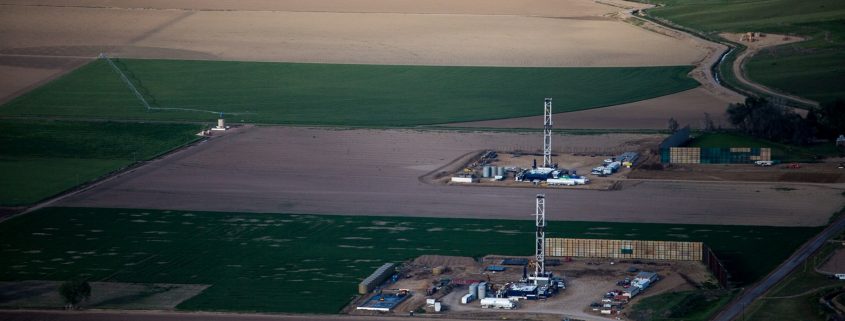

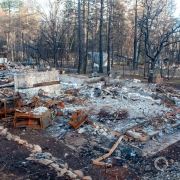


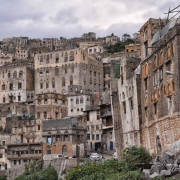
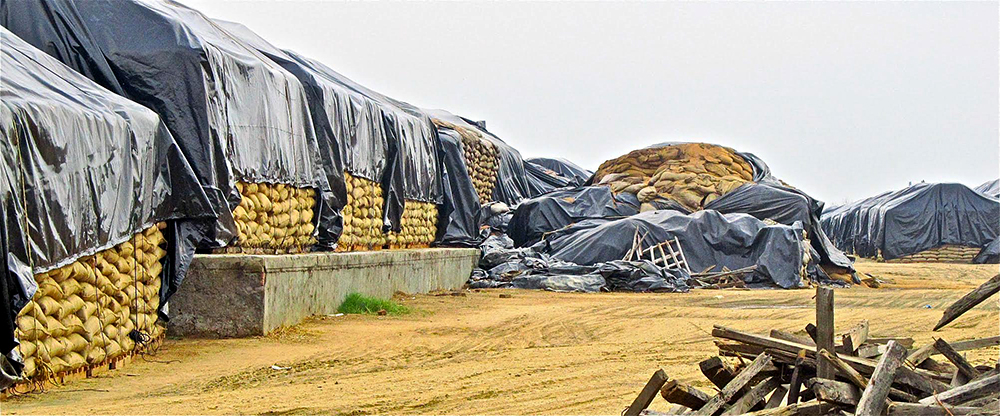
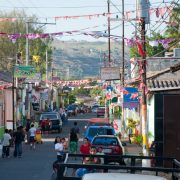



Leave a Reply
Want to join the discussion?Feel free to contribute!